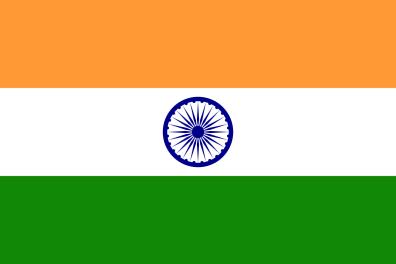This goes
to space
EOS-06
EOS-6, also named Oceansat-3A, is an Indian Earth-imaging satellite designed to provide service continuity for operational users of the Ocean Colour Monitor (OCM) instrument on Oceansat-2.
The mission objectives are to provide continuity of ocean color data with improvements to continue and enhance operational services like potential fishery zone and primary productivity.
The mission, in tandem with Oceansat-2 (on availability), will improve the use of ocean color measurements to every 24 hours and wind vector measurements to every 12 hours.
EOS-6 contains the following notable onboard devices:
- OSCAT – OceanSat Scatterometer
- SSTM – Sea Surface Temperature Monitor
- A-DCS – Advanced Data Collection System

On this
rocket
Polar Satellite Launch Vehicle - XL (PSLV-XL)
The PSLV-XL is a powerful variant of India's Polar Satellite Launch Vehicle (PSLV), developed by the Indian Space Research Organisation (ISRO). The “XL” stands for “Extended Length,” referring to its larger solid strap-on boosters, which give it more thrust than the standard PSLV version. It is ISRO’s most frequently used configuration when missions require heavier payloads or higher orbits, such as sun-synchronous orbits (SSO) or geosynchronous transfer orbits (GTO).
Specs
Height: 44.5 meters
Diameter: 2.8 m (9 ft 2 in)
Mass:
PSLV-G: 295,000 kg (650,000 lb)
PSLV-CA: 230,000 kg (510,000 lb)
PSLV-XL: 320,000 kg (710,000 lb)
Stages: 4
The PSLV-XL features a four-stage design with alternate solid and liquid propulsion systems. The first stage is powered by a large solid rocket motor (S139), supported by six extended strap-on boosters (PSOM-XL), each loaded with 12 tonnes of solid propellant. The second stage uses a liquid Vikas engine fueled by UH25 and nitrogen tetroxide. The third stage is again solid-fueled, while the fourth and final stage consists of two liquid-fueled engines using MMH and MON-3, allowing fine orbital adjustments.
This configuration has earned a reputation for high reliability and flexibility, having launched a wide variety of payloads including remote sensing satellites, navigation spacecraft, and interplanetary probes. It’s particularly known for notable missions such as Chandrayaan-1, India’s first lunar orbiter, and the Mars Orbiter Mission (Mangalyaan). The PSLV-XL also made headlines for launching 104 satellites in a single mission (PSLV-C37), a world record at the time.

From this
launch site
First Launch Pad - Satish Dhawan Space Centre - Sriharikota, India
Satish Dhawan Space Centre or Sriharikota Range is a rocket launch center operated by the Indian Space Research Organisation. It is located in Sriharikota in Andhra Pradesh.
Chosen for its remote location, the center became operational in 1971 and hosted its first launch that year for a suborbital mission.
The first orbital launch took place on August 10, 1979.
The spaceport received its current name in 2005 when it was named in honor of Satish Dhawan, the former head of the Indian Space Research Organisation.
The facility has two launch pads and will be the base of India's upcoming human spaceflight program.
Image: ISRO

Here's where to view EOS-6
Viewing Sites
- Satish Dhawan Launch Viewing Gallery
GET THE SUPERCLUSTER APP
THE SUPERCLUSTER PODCAST
A podcast exploring the amazing milestones that changed space history, the wildest ideas that drive our future, and every development in this new Golden Age of Space.
Donate to support
Your support makes the Astronaut Database and Launch Tracker possible, and keeps all Supercluster content free.
SupportCOPYRIGHT 2021 SUPERCLUSTER LLC
